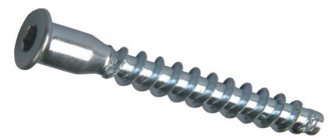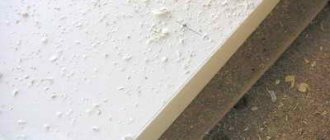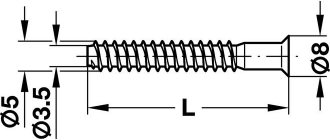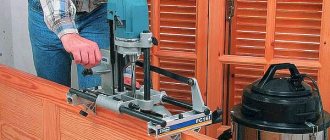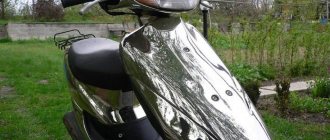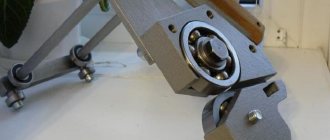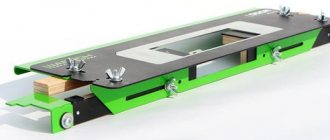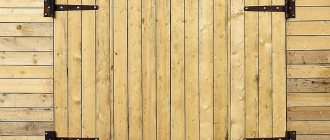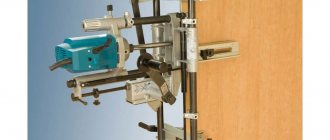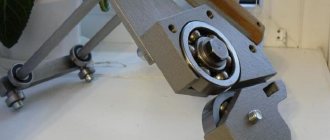The manufacture of any furniture cannot be done without such a procedure as adding chipboard. Additive means drilling holes in furniture parts to install various fittings and place fasteners.
The company's specialists carry out various work on chipboard processing - chipboard cutting, edge cutting, additives. We guarantee high quality and short deadlines; the price of services will also pleasantly surprise you.
Adding chipboard in domestic conditions can lead to the fact that the holes may turn out to be sloppy, their sizes will differ from those planned, or the material may even be damaged. It's all about the high density and heterogeneous texture of chipboard. When using non-professional tools, defects are observed in most cases. And any deviation in the diameter or depth of the hole can render the part unusable.
Additive to chipboard and laminated chipboard, drilling holes.
The manufacture of any furniture cannot be done without such a procedure as adding chipboard.
Additive means drilling holes in furniture parts to install various fittings and place fasteners. The company's specialists carry out various work on chipboard processing - chipboard cutting, edge cutting, additives. We guarantee high quality and short deadlines; the price of services will also pleasantly surprise you.
Adding chipboard in domestic conditions can lead to the fact that the holes may turn out to be sloppy, their sizes will differ from those planned, or the material may even be damaged. It's all about the high density and heterogeneous texture of chipboard. When using non-professional tools, defects are observed in most cases. And any deviation in the diameter or depth of the hole can render the part unusable.
Chipboard additive on GRIGGIO machines.
The CNC 1000 Griggio CNC drilling and attachment machine is used for drilling holes in the planes and ends of furniture parts. Depending on the type of fittings, the holes can be blind or through. Computer control of the machine allows you to achieve highly accurate results.
When it comes to processing furniture parts made of chipboard, the additive can be of two types - standard and individual.
A typical additive is used mainly in the manufacture of cabinet furniture frames. The customer does not need to accurately mark the location of the holes; only repair and assembly sketches need to be provided. Despite this, the standard additive ensures reliable and simple assembly of finished parts.
The desired type of fastener is noted on the sketch:
— eccentric tie with a wooden dowel;
— confirmat (euroscrew or euroscrew) with a wooden dowel.
Individual additives are made according to the customer’s exact drawings. The drawings must indicate the following information:
— all markings have been completed;
- all holes are marked;
— the type of hole is indicated (through or blind);
— the required hole dimensions (depth and diameter) are indicated.
With an individual additive, the holes exactly match the customer's markings, however, the functionality of the assembly of the finished product is not checked, and the quality of the assembly cannot be guaranteed.
The additive is necessary in many cases:
— installation of hidden mounting fittings (dowels, tie rods, eccentrics);
— installation of visible fittings and mechanisms (hinges, shelf supports, etc.), which can be covered with special overlays;
— decorative fittings (various handles, non-functional elements).
The company’s specialists will perform chipboard additives of any complexity for you. We guarantee quality and high precision in work, ease and reliability of assembly of finished parts, short deadlines and affordable prices.
Additive parts (through and blind, D – up to 10 mm)
The New View furniture factory has been providing services in Krasnodar for more than four years:
- Cutting laminated chipboard. (we will bring it to our workshop and cut the chipboard without chips from any base in Krasnodar)
- Edged chipboard. (we will finish with high-quality edges using any of your or our edges)
- Additive for laminated chipboard (we add kitchens, cabinets, any cabinet furniture)
- Furniture assembly. (we can assemble Kitchens, Wardrobes, Sliding Doors, Cabinet Furniture)
Our ten advantages:
- We draw up cutting maps (you only give us the dimensions of the parts indicating where to cut)
- We do the detailing from your drawing (we only need a drawing with the general dimensions of the furniture from you)
- We assemble Kitchens (with your or our fittings and facades)
- We assemble compartment doors (all components are yours or ours)
- Delivery of material to the workshop (we can purchase chipboard, edges, fittings, etc.)
- Loading and Unloading in the workshop (takes place in a warm and covered room)
- Production takes 2-3 days on average (we don’t charge for urgency)
- High-quality cutting and edging (always sharpened saws, chipboard without chips)
- Eco leather sticker, chipboard gluing, production and edging of any radii
- Reasonable prices for all types of work
Rules for ordering furniture additives
Drilling is the process of drilling holes in furniture parts. Among the main production operations - cutting, edge application and additives - the latter is the most labor-intensive, and the complexity of drilling parts for the same product can differ several times depending on the qualifications of the designer.
Orders with additives (drilling holes) are of little interest to our production; we accept them only if the documentation fully meets our requirements. Please note that checking and correcting drawings (sketches) is not our responsibility, all responsibility lies with the customer. If during the production process the documentation reveals inconsistencies with our requirements, we reserve the right to refuse to complete the order regarding additives (drilling holes) without refunding the price paid for this work.
In order to order an additive in the production of Chipboard Kit, you must send us by e-mail a correctly completed order form for chipboard parts (see the section “Price lists, forms”) and drawings of the parts - see detailed information below.
Video: how the additive is made
Drawings (sketches) for drilling holes in laminated chipboard parts (additives) must meet the following requirements:
- The center-to-center distance along the width of the part should be a multiple of 32 mm, the amount of indentation from the edge of the part is at your discretion (system 32). For more details, see below. The exception is holes for hinges.
- There is one part on one A4 sheet. View of the holes.
- The image of the part should be as large as possible and occupy most of the A4 sheet.
- Directly on the sheet with the sketch the part number is indicated in accordance with the order form: instructions for more details
- The height of numbers when printed on A4 sheet is at least 4 mm.
- The thickness and method of drawing the lines must be such that the part and dimensions are clearly visible after printing on an A4 sheet from a distance of at least 1 meter.
- The main lines should be twice as thick as the dimension lines.
- The background is white, the color of lines and numbers is black.
- There is a minimum number of intersections of dimension lines.
- The overall dimensions of the part must be indicated.
- Dimensions are given in millimeters and are always rounded to the nearest whole millimeter. For example, instead of 93.45mm, you need to specify 93mm.
- On the sketch, all dimensions are indicated after applying the edge (unlike the order form - it contains “saw” dimensions). Specify dimensions for holes of the same type starting from one base side.
- If the part is not edged on all sides or a different edge is used, then the side and type of edge must be indicated on the sketch, and the edge must be indicated by letters and/or numbers. Marking edges with lines, incl. colored are not allowed.
- Tables with hole coordinates are not allowed, as well as specifying dimensions using the coordinate method.
- We only drill holes that are listed in our price list or on this page.
- A conventional image of the holes is allowed - the same for the entire order - see example below.
- There is no need to clutter the drawings with repeated dimensions.
- Please note that we do not accept orders with drawings that do not meet these requirements, regardless of who created them - a human hand, or a “program” under human control.
Rules for ordering furniture additives
Those who have at least once in their life encountered the collection of furniture elements or direct production probably know about such a thing as an additive. No one will tell you the history of this term, but this concept is actively used by furniture makers. This is an important stage in the formation of furniture from laminated chipboard. If we consider this issue in detail, then this term refers to the process of drilling blind or through holes for hinges, fasteners and fittings in blanks for future furniture. The difficulty of assembling furniture depends on the quality of the additive. The better it is implemented, the easier the furniture is assembled.
Types of chipboard additives.
The laminated chipboard additive can be standard or individual. The main difference between these options is the degree of client participation in the process.
A typical additive is used to assemble cabinet furniture. This additive is also called “SYSTEM 32”. This additive got its name because the distance between the holes, which are located on the same line, is 32 mm. This distance is measured in width and length. Typically, furniture sold in stores is designed using this system. Naturally, the question arises - why 32 mm? This distance is set on drilling machines between drills. If you want to order an additive using system 32 from Furniture-Rapil LDSP, then you should consider the following points:
- There are no left or right parts. They are interchangeable;
- The first indentation from the front side of the part is made at a distance of 37 mm, and the next ones are already multiples of 32 mm;
- The hole has a diameter of 5mm.
The individual additive is intended for non-standard orders. In this case, the company’s specialists can offer other possible options for drilling holes in laminated chipboards. Detailed information is attached in the table below.
Holes in the plane of the part
Diameter 5 mm depth 13 mm (D5x13) - for shelf supports, eccentric rods, hinge bushings, etc.
Diameter 8 mm through (D8) - for confirmat (euroscrews)
Diameter 8 mm depth 13 mm (D8x13) - for dowels, footers, etc.
Diameter 15 mm depth 13 mm (D15x13) from the edge of the part to the center of the hole 34 mm - for eccentrics with a long rod
Diameter 20 mm depth 13 mm (D20x13) from the edge of the part to the center of the hole 9.5 mm - for eccentrics with a short rod (so-called reinforced)
Diameter 35 mm depth 12 mm (D35x12) from the edge of the part to the center of the hole 22.5 mm - for hinges with a 35 mm cup. IMPORTANT: If the sketch does not indicate the depth of the hole, we consider it equal to 12 mm
Holes in the end of the part
Diameter 5 mm depth 34 mm (D5x34) – for confirmat 50 mm long
Diameter 8 mm depth 24 mm (D8x24) - for a dowel measuring 8x30 mm
Diameter 8 mm depth 34 mm (D8x34) - for a long eccentric rod
Additional holes in the plane of the part
Diameter 5 mm through (D5) - for attaching handles, intersection ties
Additive (drilling holes)
Additive services (hole drilling)
We professionally drill holes on furniture parts. This work takes place in two stages:
- marking parts for additives;
- drilling holes for furniture hinges in chipboard and laminated chipboard.
- Additive calculation 400
rub. - Drilling holes from 3m 2 175
RUR/m 2 - Holes for Euroscrew up to 3m2 10
RUR/piece. - Box assembly 95
RUR/piece. - Assembly of a drawer in a cabinet 155
RUR/piece.
Instructions for assembling a kitchen by modules
At the stage when the parts of the headset lie in a threatening stack, you think about how not to miss and not make “spare” holes. You should pick up a tape measure and put the sketch and details of the furniture in front of your eyes. You need to learn to read details.
Namely, to highlight parts that are identical in functionality. The set consists of modules. Which have basically the same design. The structure always consists of a bottom, sides, horizons, planks and shelves. They almost always have the same additive.
Kitchen layout
First of all, using a tape measure, I arrange them by name, while not forgetting to mark each detail in the document:
- sides of upper cabinets
- horizons
- bottom
- sides of the lower cabinets
- slats
- boxes
- removable shelves
Within walking distance of you, there is a service for calculating cabinet furniture.
Then, making sure that all the parts are available, I begin marking. I briefly described how to do this in this article. The topic is worthy of a separate article, subscribe to updates and you will be one of the first to receive it.
Kitchen Additive
Now I load 5k and 8k drills, and add all the parts according to separate layouts. This allows us not to make the same movements many times, assembling each module separately.
I keep checking the sketch of the headset. I try to minimize holes on visible furniture panels. If the design allows, eliminate them altogether, replacing them with decorative corners or furniture dowels.
Additive of parts made of chipboard, laminated chipboard
Adding furniture parts using a CNC machine is a modern and high-quality approach to creating furniture. Our CNC machining additive center, installed in our production, can perform the entire range of tasks for adding furniture parts in the shortest possible time.
We use a CNC additive machine from HOMAG, which has long been considered a market leader in equipment for furniture production. Our equipment allows us to process furniture parts with dimensions of 3000x1500mm, thickness 3-60mm. The additive is performed with maximum accuracy both along the surface of the part and at the end. We provide additives for all types of fittings used in furniture production.
Additive (drilling) is the drilling of blind and through holes for connecting furniture parts to each other using standard fasteners, as well as drilling or tapping mounting holes for installing furniture fittings and mechanisms.
Why is an additive needed?
Any modern furniture requires the presence of fasteners and fittings. Both elements require additives. Without it, it will simply be impossible to assemble furniture. But the procedure must be performed at a high-quality level, for which special machines are used that make holes with an accuracy of 0.1 mm. Poor quality of the additive will lead to sad results - you won’t be able to assemble beautiful furniture.
“Nevskaya Furniture Corporation” has sufficient production capacity to provide high-quality additives for laminated chipboard and chipboard. By additive, or drilling, we mean drilling various holes (through and/or blind), which provide reliable connection of various furniture parts using standard fasteners, as well as the installation of various mechanisms and/or furniture fittings. The precision of adding chipboard and laminated chipboard guarantees the highest quality of assembly, strength and durability in the use of any furniture products.
Furniture production is distinguished by a lot of nuances and features, knowledge of which directly affects the quality, aesthetics and performance indicators of manufactured furniture. The additive of laminated chipboard, chipboard is one of the most important production processes, ensuring impeccable assembly accuracy, which implies the ideal appearance and performance characteristics of the finished furniture.
Professional chipboard additive on high-precision machines
Our company carries out professional chipboard additives on high-precision machines, so we guarantee an ideal additive for any furniture. The company’s specialists scrupulously monitor the process, minimizing the possibility of an error of even one or two tenths of a millimeter. Unconditional quality, speed and reasonable prices are the main three pillars on which the work of Nevskaya Furniture Corporation is based.
Furniture addition
Any furniture consists of several parts made of chipboard or MDF that need to be connected. To connect the parts, fastening fittings and furniture additives for these fittings are required. The procedure involves drilling holes of different diameters. High-quality work makes the assembly stages easier and more convenient. The appearance will also depend on how well the filler work was done.
What is furniture additive
Drilling through or blind holes in workpieces for hinges or fasteners is called drilling. The quality and aesthetics of the final furniture assembly depends on the professionalism of the filler work. There are two types of this process:
- Standard – cabinet frames are made from chipboard, laminated chipboard, MDF exactly according to markings and certain standards;
- Individual - only on a personal order for an atypical project.
What information must be included on the drawings?
When performing individual filler work, all markings are made in the Basis Furniture Maker program by drawing the model.
The additive for furniture hinges (diameter 35) is carried out according to the client’s template.
The customer indicates the necessary notes on the sketches. These include:
- Placing markings;
- The marks are indicated where drilling should be done;
- The type of hole is determined (blind or through);
- Information about the required width and diameter of holes.
Sketch
Sketch
- this is a graphic drawing (sketch) of the appearance of the designed product, with preliminary overall dimensions, made in isometry (Wikipedia). rice. 1
rice. 1
A sketch is necessary for a general understanding and representation of the type and purpose of the proposed furniture structure. This is the first step towards realizing your plans.
To correctly draw up a sketch, it is necessary to determine the place where the designed structure (furniture) will be located. Consider ergonomics, i.e. ease of use, will it interfere with free passage, opening doors, pulling out drawers, etc. Figure 2 shows examples of typical mistakes made when designing furniture. Non-retractable drawers: a) the width of the aluminum profile of the sliding doors is not taken into account. b) the “protrusion” of the window sill is not taken into account.
rice. 2 b). The “protrusion” of the window sill is not taken into account |
